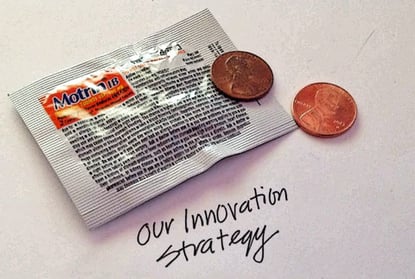The general manager at an industrial manufacturer wondered about how to effectively engage the hourly workforce as innovation strategy participants? He is hoping to figure out a practical way to include hourly employees in innovation activities comparable to those management has undertaken.
His question reflects legitimate senior executive interest in engaging the entire workforce to drive innovation and ROI through far-reaching process improvements. He was wrestling with a common challenge executives face when thinking about engaging an hourly workforce: How can I pull people off the line, shop floor, phones, or wherever else they are producing or serving customers to participate in this non-productive activity?
 via Shutterstock
via Shutterstock
Whether that concern surfaces immediately or later, it is always present. It frequently represents a deal-breaker for engaging hourly employees in any type of process improvement, business engagement, or training opportunity. Because they are paid by the hour and work on activities that directly impact the organization’s output or productivity, they seem to be off limits when it comes to participating in strategic activities to improve the business.
What about the financial hurdle of engaging hourly employees in innovation strategy?
My response to the general manager on the productivity and payment issue centered on two things:
- He is paying managers and salaried team members when they are spending all or part of a day focused on generating ideas business improvement ideas.
- Salaried team members are also, in theory, being pulled away from productive activities more directly related to their jobs when they participate in innovation workshops. It is just harder to see the productivity loss with a salaried employee. There is a tacit expectation that salaried workers will put in extra time to make up the difference, lowering their hourly cost to the point where it appears their focused innovation time is free.
That reasoning changes the business decision.
No matter who is participating in the innovation activities, leadership is signing up for a near-term financial hit. Strategic leaders look at this as an investment with an expected future return. Executives focused on short-term issues look at it as a cost and productivity loss that makes it harder to hit their plans.
Granted, the monetary impact is real. Starbucks closed its stores May 29, 2018 to hold workshops addressing racial biases among employees. Some news stories estimate the cost was $12 million: $7 million of foregone revenue at its 8,000 company-owned Starbucks stores and $5 million in wages for employees that weren’t serving customers during those hours. Commentators pointed out, however, that the investment in improved customer relations for Starbucks is minimal compared to the brand’s $24 billion annual revenue.
Run the comparable numbers for your organization. See what the real financial hurdle is in more widely and effectively engaging hourly employees to improve your operation.
If more effectively engaging your hourly workforce is on your senior team’s to-do list, contact us. We’d be happy to share details on how to move forward and dramatically improve your business through greater collaboration! - Edited from Inside the Executive Suite
If you enjoyed this article, subscribe to the free Brainzooming blog email updates.




